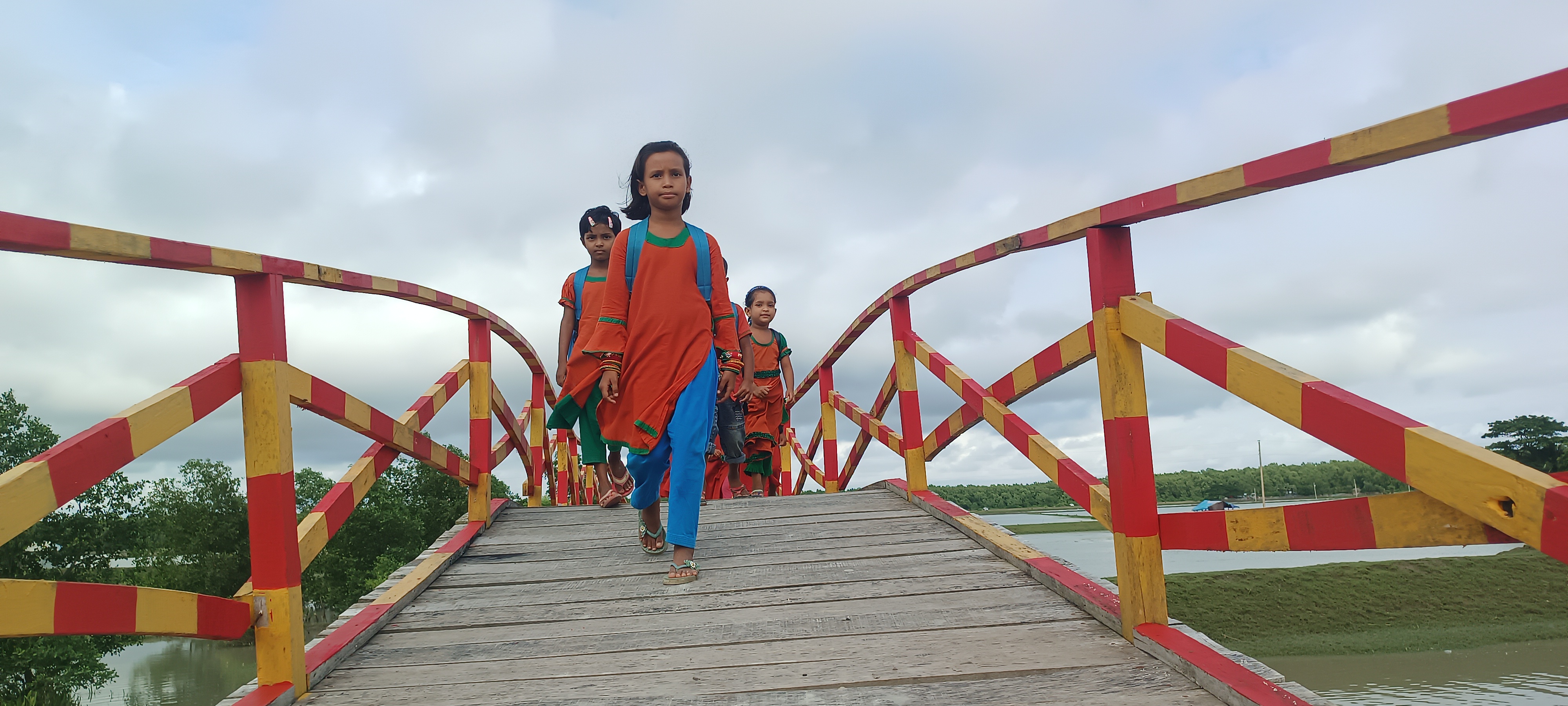
Over 7.1 million Bangladeshis were displaced by climate change in 2022, a number that could reach 13.3 million by 2050, said the WHO,
assessing the situation in the country of around 168 million people. The country’s school drop-out rate was over 17% in 2021, with more than 2 million children leaving classes as they flee climate disasters for urban slums (Source: World Economic Forum).
In the village of ‘Ashabaria Char’ in Rangabali Upazila of Patuakhali district, life has been tough due to climate change. It is a secluded village facing various hardships, lacking good roads, cyclone shelters, and markets. Being close to the river, the village is frequently hit by cyclones
, tidal waves, floods, and landslides, making it difficult for residents to reach safety during disasters.
Education is also a challenge, as there is no school in the Char, and the only option is across the Ashabaria Canal. However, transportation is a problem, especially during the rainy season when the only means of crossing is by boat or swimming. The absence of a reliable boat prevented many children from attending school daily. The construction of the Ashabaria Bridge, funded by the Local Government Initiative on Climate Change (LoGIC) project last year, has become a ray of hope for the community.
Since the bridge’s completion, education has flourished in Char. Noor Achma, a student, expressed, “We used to struggle to attend school during the rainy season, relying on boats from other routes. But now, after the construction of the bridge, many like me are eager to go to school. We can walk to school together. We feel joy that cannot be expressed in words.”
The bridge has not only facilitated education but has also significantly improved lives during disasters. Rising sea levels and storm surges due to the effects of climate change made it challenging to reach cyclone shelters, but the Ashabaria Bridge has provided a quick and safe route. Residents praise the bridge, considering it a blessing that eases communication and protects them from cyclones and floods.
The positive impact extends beyond safety; the bridge has brought economic prosperity to Ashabaria Char. Farmers can now profit by selling products in the market, ensuring smiles on their families’ faces. Bilkis Khatun, a resident, shared, “Pregnant mothers can easily reach the health complex through the bridge. We no longer fear cyclones, and we can sell our products directly in the market, improving our lives.” It’s not just one person’s opinion about the bridge, almost everyone says it changed their lives.
Bilkis Khatun, another resident of Ashabaria Char, said, “Now pregnant mothers can easily go to the upazila health complex for treatment through the bridge. Now we have no fear of dying during cyclones. Because we can get to the shelter very quickly through the bridge. Apart from this, we got the opportunity to sell the products produced here directly in the market. With which I can buy something for myself and my family.”
The LoGIC Project is a joint initiative, supported by UNDP Bangladesh, UNCDF, European Union, Sweden, and Denmark. It aims to empower communities, local government institutions and civil society organizations to adapt to climate change in selected vulnerable areas. The Ashabaria Bridge stands as a symbol of positive change, offering hope and resilience to the people of Ashabaria Char.
